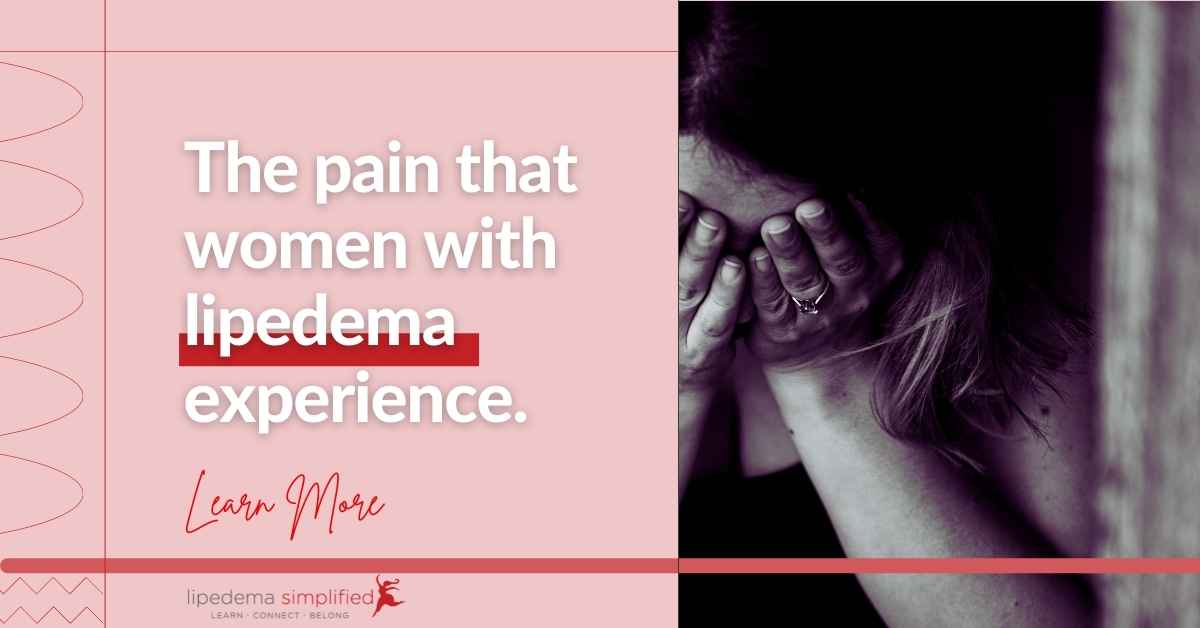
This week, I am going to discuss the pain that women with lipedema experience. I will focus on a study by Schmeller & Meier-Vollrath that was published in the German journal LymphForsch in 2008. The title of the paper is “Pain with Lipoedema: Attempt to Approximate.” (Note: “lipoedema” is the European spelling of lipedema.)
Methods
The researchers surveyed 50 women with lipedema at a clinic in Germany. All of the women had Stage-2 lipedema, with an average age of 39 and an average BMI of 32.6. The women answered a 30-question pain questionnaire.
Results
The authors found that most pain scales aren’t enough to properly quantify the level of pain that women with lipedema experience. The pain scales were so inadequate that 40 of the 50 women provided additional information to describe their pain. These descriptions show the severe emotional distress associated with their pain, which adds a further psychological dimension to their condition. Interestingly, although many reported that their pain was not severe, the chronic nature of their pain gave this symptom greater significance in their life.
Takeaways
The authors learned several core principles about lipedema pain from this study. They summarized these principles as:
- Lipedema pain is very strong in many cases.
- Pain varies widely depending on the individual.
- The scientific literature has clearly underestimated the level of pain in women with lipedema.
- Lipedema pain has an ‘average’ appearance compared with other chronic pain conditions.
- The pain associated with lipedema should be taken into account to better assess the severity of the disease.
- Lipedema pain should be assessed not only qualitatively, but quantitatively in the future.
The study is important because it shows how prevalent and underestimated pain is as a symptom of lipedema. Medical providers routinely discount the pain that women with lipedema experience. And much more work must be done to better understand the pain that women with lipedema face. This study’s authors suggest that a good measure of pain should be used both before and after therapy for lipedema, to have a better understanding of what’s going on with each individual. I hope that future research will examine this issue and give us more clarity into the role that pain plays in lipedema.
~ Leslyn Keith, OTD, CLT-LANA
Board President, Director of Research | The Lipedema Project
